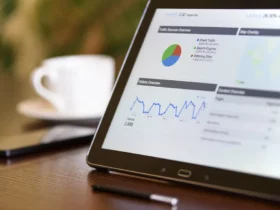Ad fraud, fake news, and privacy issues make it difficult for digital marketers to navigate the internet.
Ad fraud can completely undermine a business’s marketing campaigns, and these forms of fraud are usually very well hidden and can go unnoticed if marketers don’t know what to look out for.
When it comes to using ads on the internet, marketers do everything to spend their ad budget as effectively as possible.
This includes extensive research on the target audience, monitoring keyword spending, and even keeping an eye on competitors.
They also use different tools during the process, from proxies in the US to web scrapers and ad management software.
We’ll be covering the following topics in this article on ad fraud:
- What is ad fraud?
- Signs of ad fraud
- How to detect ad fraud?
What Is Ad Fraud?
Ad fraud is an attempt to trick advertising platforms into thinking an ad has been clicked on more times than it has.
This can have a detrimental effect on businesses marketing campaigns. Businesses aim to display information about their products, services, or business through online digital ads.
The goal is that interested individuals will see these ads and click on them to be taken directly to the product or website.
However, fraudsters can use automated bots to fake interactions with these ads.
The bots will click on and interact with the ads, but they’ll never actually buy the product or support the business since they’re just bots.
This means that the business is paying for the click, but since they aren’t real users, the business is not getting the traffic or leads it was after.
Ad fraud is a type of cybercrime that can have serious detrimental effects on businesses marketing budgets, and it can skew their marketing performance and affect the business optimizations and reputation.
Signs Of Ad Fraud
Ad fraud can be difficult to spot if you don’t know what you’re looking for. However, there are a few telltale signs that digital marketers can look out for.
If they notice any of these signs, they can investigate the potential of ad fraud further by using technology to detect bot traffic.
No Performance
If you see no change in performance from your display ads, that is a red flag and should be investigated further.
You can check this by comparing the performance of your ads with the performance of other channels like Facebook or Instagram.
For example, if 200 clicks from Facebook lead to 20 conversions, but the same number of clicks on a display ad leads to no conversions, it’s safe to assume that something’s not right, and you should investigate further.
Poor Site Analytics
High bounce rates and short website sessions are more factors that could indicate ad fraud.
If a real user saw the ad and were interested enough to get more information, they would not click the ad and then leave your website immediately when it opens – this is something that fraudsters and bots would do.
Datacenter IP Address
If you start noticing no performance or poor analytics, you can look at the IP addresses of those users.
If you notice a high number of datacenter IP addresses, it could be that you’ve been targeted by ad fraud.
High Click-Through-Rates (CTR)
Unrealistic CTRs are another warning sign to look out for. All marketers wish that their display ads would return a high CTR, but this also has to be realistic.
However, if your successful campaigns boasted a CTR of 3% (a good CTR is between 2%-5%) but all of a sudden your CTR jumps to 10%, you’ll know something is up, especially if you notice some of the other signs we’ve mentioned.
How To Detect Ad Fraud?
Add fraud is still a relatively difficult form of cybercrime to detect.
To catch these fraudulent ads before they cause more damage, marketers need to monitor their ad campaigns carefully and investigate if they see anything that looks odd.
You can enlist the services of ad fraud detection companies if you use a lot of digital advertising.
Alternatively, there are also ad fraud detection tools that you can use to monitor these threats in-house.
Can Proxies Help Detect Local Ad Fraud?
Proxies are a good tool to use for detecting local ad fraud. You can use a US proxy to see and test how your ads appear to potential consumers in the US.
A US proxy is location-based, so if you want to see how your ads appear in other countries, you can get other location-specific proxies, such as German or Brazil proxies, to test your ads in other countries.
These proxies will make it appear like you’re accessing the web from within that country, so you’ll see the ads the same way potential leads would.
Ad verification companies rely on vast proxy networks to trap ad fraudsters.
Final Thoughts
Ad fraud can harm businesses.
Not only does it drain your marketing budget without a return on investment, but it can also affect your optimization, content, and brand reputation.
To avoid ad fraud, marketers need to carefully monitor their ad campaigns’ performance and notice any oddities such as no performance or poor site analytics.









